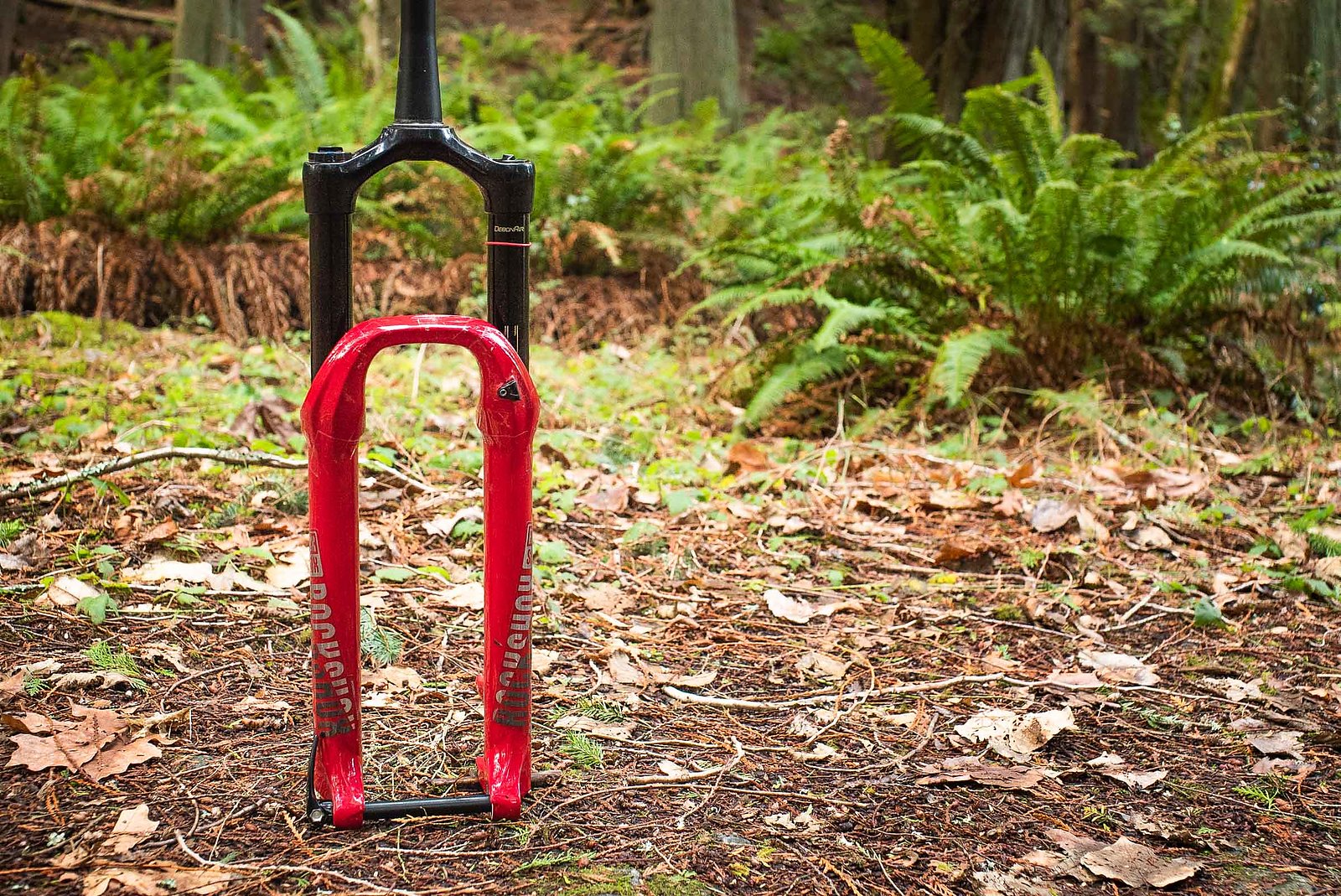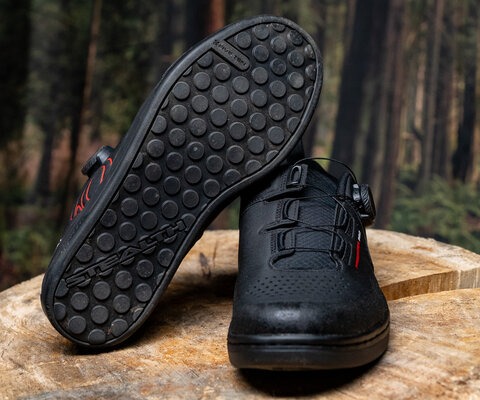
2019 Rockshox Lyrik 160mm Fork Review
Words by Steve Dempsey | Photos by Jann Eberharter
It is amazing to think about how far single crown forks have come, even in just the past five years.
What used to be a triple crown weighing in at 6 pounds is now a single crown at 4 pounds. We as riders can truly enjoy down-hill capable suspension in a nearly XC-light package. But with multiple companies pushing suspension evolution forward, taking the top seat in a very tight, highly competitive, ever developing market is nearly as tough as making those two pounds disappear into thin air.
When Rockshox debuted their 2019 Lyric, it didn’t look too different (except for the BoXXer Red paint option) and that was a good thing—it meant they focused on what’s inside the fork. They were able to keep the Lyrik at 4 pounds flat, not a far measure from the previous version, and increase its abilities significantly.
The main improvement in my opinion is the movement away from the Mission Control unit/Charger I Damper (version 1) and toward the brand-spanking-new Charger II Damper. After coming off the previous 2018 version of the Lyrik, it was a perfect test scenario to really feel the changes Rockshox made for 2019.



Design Basics
The engineers at Rockshox remained on course with the 2019 Lyrik. Other than more offset options, the overall chassis remains unchanged. The 7050-aluminum, hollow-forged crown is very strong and light. Riders can fine tune the ride with a 37mm and 46mm offset in 27.5”, and 42mm or 51mm offset in 29”. This allows users and manufactures to finesse a slightly more twitchy (longer offset) or more stable (shorter offset) steering feel.
The lowers remain magnesium but sport a new paint option, although black is also still available. The stanchions boast a 35mm diameter and have the same Fast Black coating that we have come to enjoy. After months of tough riding, I have yet to see any deterioration of that Fast Black coating on either of the 2018 or 2019 Lyriks. Rockshox has been on top of their quality control and the proof is in the longevity of these forks.
Another key update is the fact that the 2019 Lyrik is strictly boost compatible. This wider axle (15x110mm) helps keep big wheels stiff at a critical point: the connection of hub, axle and fork dropout. The Torque Caps increase surface area as well, furthering the stoutness of the front end. The time tested Maxle is available in a Stealth (tool mandatory) option or Ultimate (tool-less). I ride the Ultimate and it works great. Tool free is handy (get it?), but if you want to be ultra-safe, the Stealth ensures no crash can disable your axle.
Rockshox continues to utilize the Rapid Recovery system to keep the front wheel glued to the dirt during a series of repeated big hits. The real big change is the new Charger II, DebonAir spring. Rockshox’s engineers were quite clever in finding more space in a very tight box. By hollowing out the actual shaft of the air spring, the 2019 DebonAir spring boasts roughly 40% more volume. The intention here was to allow the fork to ease into the travel with a buttery smooth fashion. It has a similar feel to a coil fork, but without the rattling of an internal spring or the lack of adjustability. The design nerds at Rockshox got it right and this change was evident right out of the gate. It is so supple of the top I thought I was running 10 PSI too low. Turns out that’s just how you want it. More negative air may seem like a minute change, but it improved the ride quality of this fork drastically.



On the Trail
The suppleness of the new DebonAir spring was ultimately the first and most significant improvement that I noticed. Here’s the most straight-forward way of explaining the change: DebonAir Charger II = larger negative air spring. More negative air means more cush. More cush means improved small bump compliance, more consistent ride quality from the start of a run to the finish, lower internal operating temperatures (fewer harsh hits mid-run) and less friction. Basically, just better overall suspension performance.
In setting up the fork for the first time, I kept things closer to the more open end of high and low speed compression. This is a long-standing default for me in Bellingham as the trails are full of clutter and feedback. I was surprised that the 2019 Lyrik was so well tuned in terms of its compression range. I’ve ridden all sorts of forks out here and almost all I ride best with fully open compression for these particularly technical trails. One click of the low-speed was a substantial change, but not so much as to make the ride harsh from the start. This translates to fork that is highly tunable because the rider can actually use the entire compression spectrum instead of just the first few clicks.
I upped the high-speed compression to the middle setting and kept it there. The firmer feel was desired, especially at higher speeds and I was pleasantly surprised that Rockshox’s new Lyrik rode so well through the entire 160mm stroke of the fork. The 2019 Lyrik is a noticeable upgrade, and if you want to update your 2018 version, well Rockshox has you covered there with compatible upgrade options.
Final Thoughts
The redesigned 2019 Lyrik is nothing short of stellar. The chassis remains crazy stiff and light, not too much change to report there. The cherry-red paint option certainly catches the eye but doesn’t actually make you ride your local DH lines faster. But the new DebonAir spring only makes a good thing better. The Lyrik’s performance will certainly satisfy the masses and I hope this kind of performance is the new standard for the trail fork category.
2019 Rockshox Lyrik 160mm
MSRP: $999


